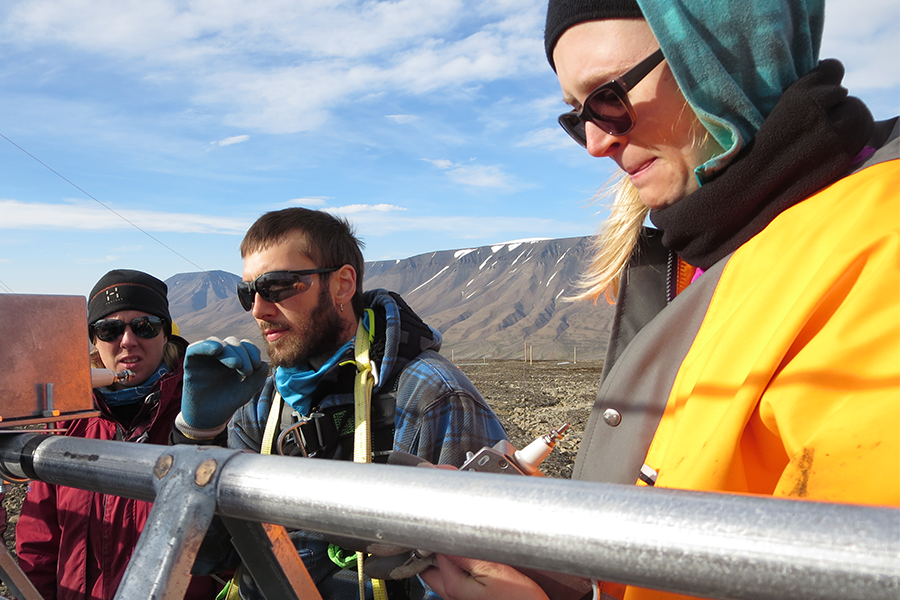
SuperDARN in the far north
Rifle training was one of the first things U of S research engineers Kevin Krieger and Marci Detwiller needed to do when they arrived in Norway.
By Michael Robin"At 30 metres, you have to hit a circle that's about the size of a polar bear's heart and lungs," said Krieger, indicating a circle about the size of a serving platter with his hands. The training also included how to tell if a bear is getting aggressive, curious or just passing through.
Fortunately, the training was never put into practice as Krieger, Detwiller and their team put together Norway's first SuperDARN radar installation, near the community of Longyearbyen in the Svalbard archipelago. At 78 degrees north latitude and nearly 1,300 kilometres from the Arctic Circle, it is the northernmost civilian community on Earth. Detwiller did put in a few shifts on foggy days, when visibility dictated that one of the team do guard duty, pacing back and forth with her rifle as the others worked.
SuperDARN, or Super Dual Auroral Radar Network, is an international effort to map and predict space weather—the storms of charged particles high above Earth where the solar wind crashes into Earth's magnetic field. These storms can affect aircraft navigation, communications satellites and electrical transmission grids on the ground.
SuperDARN installations are typically at high latitudes to better observe the auroral oval, that is, the aurora borealis or "northern lights" in the Northern Hemisphere and the aurora australis in the south. The Svalbard installation fills in a gap in the network's coverage.
"This is a higher latitude radar like our PolarDARN radars here, so it starts to fill that gap (in coverage) at really high latitudes," said Kathryn McWilliams, a lead SuperDARN researcher in the Institute of Space and Atmospheric Studies (ISAS) in the U of S Department of Physics and Engineering Physics. "It basically points towards Canada."
Design and partial assembly of the 15-metre masts and cable systems that make up the radar antennae was done at the U of S, while a team at the University of Leicester in the U.K. was contracted to contribute the electronics.
Once the components were ready, they were shipped up to Svalbard in 2014 to await the arrival of the construction team in July and August of this year. For Krieger and Detwiller, both U of S alumni hired by ISAS as SuperDARN research engineers, it was a long haul.
"If you do it in one go, it took me 28 hours of continuous travel," Krieger said. "It was four flights."
Detwiller's return trip was even more of a marathon.
"On the way back, it was almost two full days," she said. "About 40 hours."
Krieger explained that SuperDARN sites are placed near communities, where there is a source of power, internet access for research data transmission, and local people who can go out and take a look if something goes awry. Longyearbyen fits all these criteria and more, offering a modern airport with daily flights (the town's population of 2,000 swells to twice its size during tourist season), and even a local university dedicated to northern studies.
Site preparation by their Norwegian colleagues included drilling in wooden posts to hold the masts. No metal is allowed in the soil as it could corrode and contaminate the ecologically sensitive and protected area. The posts were installed while there was snow on the ground for the same reason: no vehicles are allowed on the ground in the summer.
"We ended up walking 400 metres with all the equipment, back and forth, so everybody got a good workout," Krieger said.
In the end, the construction went according to plan and on schedule, and SuperDARN will soon be strengthened by the Norwegian "eye on the sky."
"It's filling a gap in the European sector at very high latitudes," McWilliams said. "It's starting to fill in this complete pattern. There are some gaps but we're filling them in."

